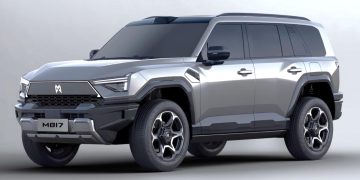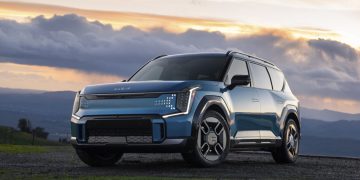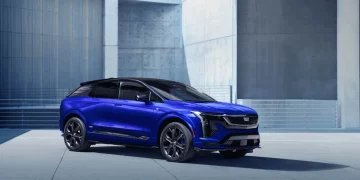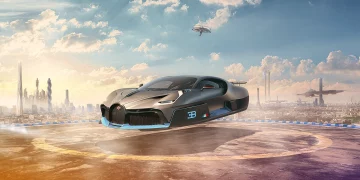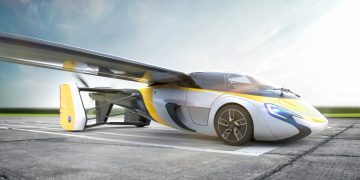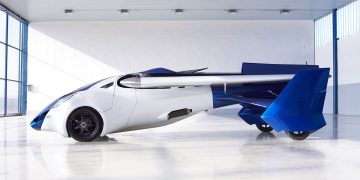Amphibious cars are a fascinating concept that merges land and water transportation into a single versatile vehicle. The idea of vehicles capable of driving on both roads and water has long captured the imagination of engineers, travelers, and inventors. As technology continues to evolve, amphibious cars are inching closer to becoming a mainstream mode of transportation. This article delves into the technological advancements in amphibious vehicles and explores their potential to transform the future of travel.
1. The Evolution of Amphibious Cars: From Concept to Reality
Amphibious vehicles have been part of human imagination for centuries, with early attempts dating back to the 19th century. The first practical amphibious vehicle was developed in the 1940s, primarily for military use. These early models, such as the “DUKW” used during World War II, were primarily designed for amphibious landings and water-based logistics.
1.1 Early Beginnings: The DUKW and Military Uses
The DUKW, a 2.5-ton truck developed by General Motors, was a notable example of amphibious vehicle design. It was used extensively during World War II for transporting troops and supplies across water. While it was functional, it was far from the sleek, efficient amphibious vehicles we see in modern times.
After the war, the concept of amphibious cars gradually shifted from military to civilian use. In the 1960s, several car manufacturers, such as Amphicar, introduced consumer-friendly amphibious vehicles, the most famous being the Amphicar 770. These vehicles were capable of driving on land and then converting to boats once they hit the water. Although these early models were not commercially successful, they laid the groundwork for future developments.
1.2 Modern Innovations: Amphibious Vehicles in the 21st Century
In recent decades, advances in materials, automotive engineering, and propulsion systems have allowed for the development of more practical and efficient amphibious vehicles. Modern amphibious cars are designed with greater attention to aerodynamics, buoyancy, and durability. The growth of electric propulsion systems also holds promise for making amphibious vehicles more sustainable and cost-effective.
Companies and innovators around the world are currently developing a range of amphibious vehicles, each with the potential to redefine how we think about travel. Some of these vehicles are focused on leisure use, while others are designed for more practical applications, such as emergency response, tourism, and transportation in regions with limited infrastructure.
2. Technological Advancements in Amphibious Vehicle Design
The design and technology behind modern amphibious cars have undergone significant evolution. Several key innovations make these vehicles more reliable, efficient, and practical for everyday use.
2.1 The Role of Advanced Materials
One of the most significant advances in amphibious vehicle design is the use of lightweight yet durable materials. Traditional amphibious cars often faced challenges with weight, which made them less efficient on land and water. However, modern amphibious vehicles utilize high-strength, lightweight materials such as carbon fiber, aluminum, and advanced plastics to reduce weight while maintaining durability.
These materials not only improve the vehicle’s performance but also ensure greater longevity and resistance to corrosion from water exposure. This is especially crucial for amphibious cars, which must contend with both land-based and aquatic environments.
2.2 Propulsion Systems: Combining Land and Water Power
Another critical area of innovation is the propulsion system of amphibious vehicles. Early amphibious vehicles typically relied on large, cumbersome propellers for water propulsion. However, modern designs have incorporated more efficient and streamlined propulsion technologies.
One of the most notable advances in this area is the development of hybrid propulsion systems that combine traditional internal combustion engines with electric motors. Hybrid systems offer greater efficiency, enabling amphibious vehicles to switch seamlessly between land and water modes without sacrificing performance.
Additionally, electric propulsion systems are gaining popularity in amphibious vehicle designs due to their environmental benefits and ease of maintenance. Electric motors provide a quieter, cleaner, and more energy-efficient means of propulsion, which is vital for both reducing the carbon footprint of amphibious vehicles and improving their usability in areas with sensitive ecosystems.
2.3 Hydrodynamics and Buoyancy: Ensuring Stability in Water
Buoyancy and hydrodynamics are two key factors in designing successful amphibious vehicles. A vehicle that performs well on land must also be able to stay afloat and move efficiently in the water. Advances in hydrodynamic design have allowed modern amphibious vehicles to achieve greater stability in water without sacrificing their ability to drive on land.
Innovative hull designs and streamlined bodies help amphibious vehicles cut through water more smoothly, reducing drag and improving speed and maneuverability. The use of adjustable buoyancy systems is also becoming more common, allowing vehicles to adapt their buoyancy based on water conditions, such as tides or currents.
2.4 Autonomous and Smart Technologies
As autonomous vehicle technology continues to evolve, it is also being integrated into amphibious vehicle design. Many modern amphibious vehicles are being equipped with smart systems that improve their navigation, safety, and performance. This includes GPS navigation systems, collision avoidance technology, and even self-driving capabilities for both land and water travel.
For example, autonomous amphibious vehicles could be used for tasks such as delivering supplies to remote areas or transporting tourists through rivers and lakes without the need for a human operator. These vehicles could also be equipped with real-time data collection systems, such as environmental sensors or cameras, to monitor conditions and ensure safe travel in both land and water environments.

3. The Potential Impact of Amphibious Cars on Future Travel
The development of amphibious cars has the potential to revolutionize the way we travel, especially in regions where access to land-based transportation infrastructure is limited or non-existent. While these vehicles may not replace traditional cars in most urban areas, they could play a significant role in specific sectors and geographic locations.
3.1 Enhancing Travel in Remote and Coastal Areas
Amphibious cars offer significant advantages in remote areas that are not easily accessible by traditional road vehicles. In coastal regions, islands, or flood-prone areas, amphibious vehicles could provide a versatile solution for transportation. These vehicles could help people navigate between different landmasses or use water routes when roads are damaged or flooded.
For instance, amphibious vehicles could provide essential connectivity for rural or isolated communities, offering a safer and faster way to travel during adverse weather conditions or natural disasters. This could reduce the need for expensive infrastructure projects, such as bridges and ferries, and offer a more sustainable mode of transport.
3.2 Tourism and Leisure Applications
Amphibious cars also have strong potential in the tourism and leisure industries. Companies could offer unique sightseeing experiences, where tourists could explore both land and water in a single trip. For example, amphibious vehicle tours could take visitors through cities, rivers, lakes, or coastal regions, offering a one-of-a-kind experience that traditional land-based vehicles cannot provide.
The rise of eco-tourism could also drive demand for amphibious vehicles, as they offer a sustainable way to explore natural environments without damaging delicate ecosystems. Amphibious vehicles can access areas that are often inaccessible to traditional boats or vehicles, such as wetlands, coastal beaches, or remote islands.
3.3 Urban Mobility and Traffic Congestion Solutions
Amphibious vehicles could potentially be integrated into urban mobility solutions, offering an alternative means of transport in areas with heavy traffic or limited road infrastructure. In cities with large rivers, lakes, or canals, amphibious cars could offer a solution to congestion by providing an alternative route on water.
By using amphibious vehicles for short-range trips, cities could alleviate some of the pressure on traditional transportation systems and reduce pollution. These vehicles could also be used as part of a larger “mobility-as-a-service” network, where passengers can book rides on-demand, switching between land and water transportation as needed.
4. The Challenges and Barriers to Widespread Adoption
While the potential benefits of amphibious vehicles are clear, there are several challenges and barriers that must be addressed before they can be adopted on a large scale. These challenges include:
4.1 Regulatory Issues and Safety Standards
One of the main hurdles to the widespread adoption of amphibious vehicles is regulatory approval. Both land and water-based transportation systems are governed by separate sets of regulations, which creates a complex legal landscape for amphibious vehicles. Governments must develop new rules and safety standards that account for the unique characteristics of amphibious vehicles and ensure they are safe for both land and water use.
4.2 High Production Costs
The development and production of amphibious vehicles are still relatively expensive, which may limit their accessibility to the general public. Although costs may decrease as technology improves and production scales up, amphibious cars are likely to remain a premium product in the near future.
4.3 Environmental and Ecosystem Considerations
While amphibious cars could help reduce congestion and pollution, they could also raise concerns about their environmental impact. These vehicles must be designed with sensitivity to the ecosystems they operate in, ensuring they do not disrupt aquatic life or damage sensitive habitats. Furthermore, the use of amphibious vehicles in environmentally protected areas could face opposition from environmental groups and regulatory agencies.
5. Conclusion: The Future of Amphibious Vehicles in Travel
Amphibious cars represent a fascinating and innovative approach to transportation, offering the possibility of seamless travel between land and water. While still in the early stages of development, these vehicles are poised to become an integral part of the future of travel, particularly in areas where traditional transportation options are limited.
With advancements in materials, propulsion systems, and autonomous technologies, amphibious vehicles could revolutionize travel in coastal, rural, and urban areas alike. However, challenges such as regulatory issues, production costs, and environmental concerns must be addressed before amphibious cars can truly transform the way we think about travel.













